HP Z6 G5 A Workstation Review: 96-Core AMD Ryzen Threadripper Pro 7995WX Impresses
by Gavin Bonshor on December 13, 2023 9:40 AM EST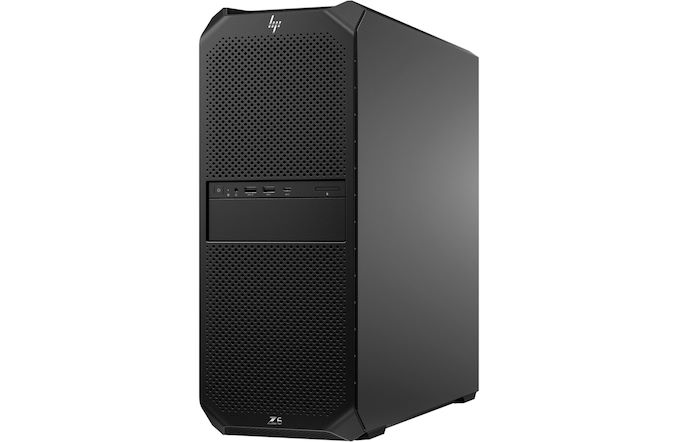
With AMD's recent launch of their Zen 4 architecture-based Threadripper 7000 series CPUs, the company and its OEM partners have unleashed a new wave of high-end PCs and workstations based on the considerable-core-count processors. Though not a massive market in and of itself, the workstation market is by most respects the pinnacle of the PC market, with systems employing the biggest and fastest hardware available, and often a whole lot of it. As a result, the workstation market is still a very important one to PC OEMs and chip vendors who are looking to move big silicon for big prices – but it's also a fun one for consumers to watch, if only for a glimpse of what all of this PC hardware is capable of in its most powerful configurations.
As Threadripper Pro 7000 workstations are now shipping, we're finally getting our first look at AMD's premiere workstation silicon. Unlike AMD's vanilla Threadripper 7000 processors, which we reviewed last month, for their top-end Pro silicon AMD is letting their OEM partners take the lead in showcasing their latest wares. With virtually all workstation-grade CPUs sold to OEMs, self-built workstations aren't really a thing. At the same time, good workstation hardware it in a class of its own, not just with chips but with regards to the entire package – and all of which AMD's OEM partners are eager to show off. Which for today's review, means we get to do something we don't get to do very often at AnandTech, and take a look at a proper, high-end workstation.
At a high level, the workstation market exists to address workloads and system support needs that traditional desktop PCs just can't meet. While a workstation might usually resemble the look of the quintessential desktop PC on the outside, the inner workings and component configurations are designed to offer more of everything: more multi-threaded performance, more GPUs, more RAM, more I/O, and so much more. These systems are traditionally designed for and aimed at professionals looking to run extensive data processing, CAD tools, video editing, and rendering workloads – all tasks with significant dataset sizes, and which can benefit from the extra hardware.
For our first look at the Threadripper Pro 7000 series hardware, today we are taking a look at a fully-fledged workstation from HP's Z6 range, the HP Z6 G5 A. One of the powerhouse vendors in the workstation space with their Z-series systems, HP has put together a new lineup of systems based around AMD's new workstation processors, including the high-end model we're reviewing today that's based on AMD's flagship Ryzen Threadripper Pro 7995WX processor. With 96 Zen 4 cores of processing power, the 7995WX is intended to tackle the most complex of workloads. Coupled with AMD's latest silicon, HP's workstation is capable of supporting up to three high-end NVIDIA RTX 6000 (Ada Lovelace) workstation graphics cards, and can be configured with up to 1 TB of DDR5-5600 RDIMM memory, making the HP Z6 G5 A a profoundly powerful single-socketed workstation PC.
HP Z6 G5 A: Workstation with Threadripper Pro 7995WX
Drawing from the same technological advancements of AMD's Zen 4 core architecture within their EPYC Genoa series, AMD has segmented its latest Threadripper offerings into two distinct classes: the workstation-grade Pro series and the high-end desktop (HEDT) non-Pro series. This segmentation is more about product differentiation more than a direct reflection of each version's capabilities.
The Pro variants are designed with enhanced features, including increased core counts (Up to 96C/192T), expanded I/O options, and greater memory bandwidth (8-channel vs. 4-channel). Meanwhile, the non-Pro Threadripper 7000 series, including the Ryzen Threadripper 7980X (64C/128T) and 7970X (32C/64T), which we've reviewed, offer a scaled-down alternative, continuing a trend seen previously in the Threadripper 3000 series. Notably, the Threadripper 7000 Pro, though branded as a workstation solution, stands out as the more robust option overall, ranging from entry-level 12C/24T up to the 96C/192T behemoth.
The entire Threadripper Pro 7000 line uses the same Zen 4 core architecture as in AMD's EPYC 9004 series and the Ryzen 7000, designed for desktop systems. These incorporate multiple Zen 4 CCDs (7995WX has 12 x CCDs) and a robust server-grade IOD, as seen in AMD's Genoa EPYC chips. AMD's Ryzen Threadripper Pro 7000 series uses the new 4844-pin LGA sTR5 socket. AMD differentiates things at the motherboard level, offering WRX90 for the Threadripper 7000 Pro and TRX50 for the non-Pro variants. However, the Pro chips can be placed into TRX50 and WRX90 motherboards, albeit limited to 4-channel in the desktop-focused TRX50 boards. The Threadripper non-Pro 7000 chips can be used with TRX50 only and aren't cross-compatible with WRX90.
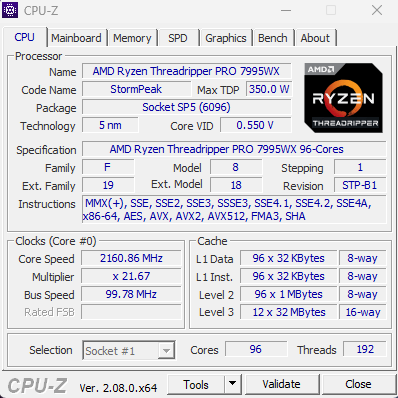
CPUz screenshot of the AMD Ryzen Threadripper Pro 7995WX processor
AMD's high-end IOD has been reutilized (or borrowed) from the EPYC lineup and built using TSMC's N6 node, which is another significant benefit to the platform. This IOD facilitates connections across the 12 CCDs on the 7995WX and, compared to the Ryzen Threadripper 5000 Pro's IOD, offers an improved die-to-die chiplet interface with lower power consumption. AMD has enhanced the throughput capacity of this interface, achieving up to 36 Gbps with a 20:1 clock ratio and supporting a FCLK of up to 1.8 GHz.
| AMD Ryzen Threadripper 7000 Pro WX-Series (Zen 4) | |||||||||
| AnandTech | Cores | Base Freq |
Turbo Freq |
PCIe (Gen 5) |
CCDs + I/O |
Cache (L3) |
TDP | DRAM (RDIMM) |
Price Newegg ($) |
| 7995WX | 96 / 192 | 2500 | 5100 | 128 | 12 + 1 | 384 MB | 350W | 8 x DDR5-5200 | $9999 |
| 7985WX | 64 / 128 | 3200 | 5100 | 128 | 8 + 1 | 256 MB | 350W | 8 x DDR5-5200 | $7349 |
| 7975WX | 32 / 64 | 4000 | 5300 | 128 | 4 + 1 | 128 MB | 350W | 8 x DDR5-5200 | $3899 |
| 7965WX | 24 / 48 | 4200 | 5300 | 128 | 4 + 1 | 128 MB | 350W | 8 x DDR5-5200 | $2649 |
| 7955WX | 16 / 32 | 4500 | 5300 | 128 | 2 + 1 | 64 MB | 350W | 8 x DDR5-5200 | TBD |
| 7945WX | 12 / 24 | 4700 | 5300 | 128 | 2 + 1 | 48 MB | 350W | 8 x DDR5-5200 | TBD |
The AMD Ryzen Threadripper 7000 Pro series closely mirrors the EPYC 9004 lineup in terms of features and capabilities, extending up to 96 Zen 4 CPU cores on the Ryzen Threadripper Pro 7995WX, comparable to the best offerings in the Genoa series. Regarding connectivity, all Pro models include 128 PCIe 5.0 lanes, supplemented by additional PCIe 3.0 lanes. The primary distinction between the Threadripper 7000 Pro and its EPYC 9004 counterpart lies in memory support: the Pro series supports 8 lanes of DDR5 memory, compared to the 12 supported by EPYC chips.
AMD's Ryzen Threadripper 7000 Pro WX series underpins AMD's effort to integrate the same level of scale and power seen in their EPYC 1P socketed chips directly into the realm of high-performance workstations. These processors represent not only an upgrade from the Zen 3-based Ryzen Threadripper 5000 Pro WX-series through utilizing Zen 4 cores instead of Zen 3, but this generational shift brings improvements in IPC performance, energy efficiency, and increased core clock speeds.
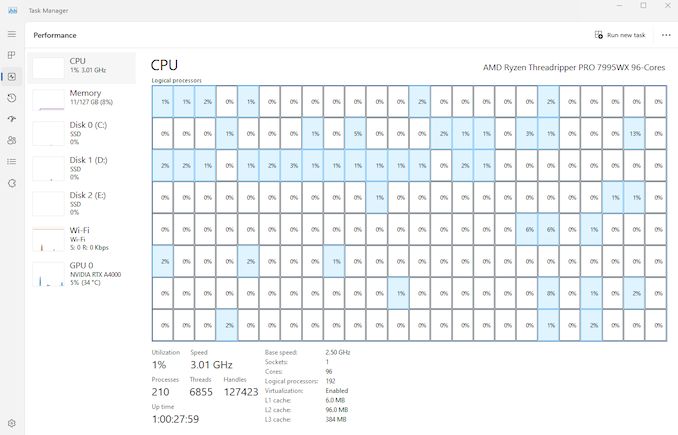
192 Threads in Task Manager on a single socket!
Other notable improvements in the Threadripper Pro 7000 series include the increase in PCIe lanes and L3 cache, with the top model, the 7995WX, boasting 384 MB of unified L3 cache (32 MB per CCD), representing a 50% increase over the previous generation. However, these enhancements come with a trade-off in terms of TDP, with the 7000 WX series chips operating at a higher 350 Watt TDP compared to the 280 Watt TDP of the 5000 WX series.
The Ryzen Threadripper Pro 7000 WX-series positions itself as a formidable competitor to Intel's latest workstation platforms, including the Xeon W9-3400 series based on the Sapphire Rapids architecture. AMD's Threadripper 7000 Pro WX series emphasizes its advantages in core count and cache size, boasting up to 1.7 times more cores and significantly more L3 cache compared to Intel's Xeon W9-3495X. It also introduces support for the AVX-512 instruction set with Zen 4 cores, enhancing performance in specific workloads and improving INT8 inferencing capabilities. The AVX-512 implementation is unique, as it distributes 512-bit instructions across two 256-bit vector paths over two cycles.
HP Z6 G5 A Workstation: Configuration and Specifications
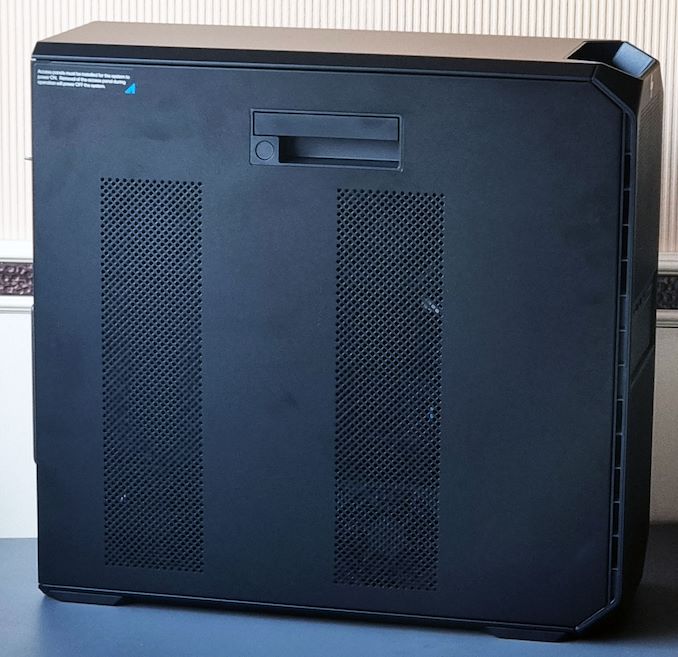 The HP Z6 G5 A workstation as reviewed
The HP Z6 G5 A workstation as reviewed
Launched in conjunction with AMD's Threadripper Pro 7000 series, the Z6 G5 A is HP's latest generation workstation design. The company offers both AMD and Intel workstations under the overarching Z6 G5 brand, with AMD systems denoted by the A suffix.
For AMD-aspirational buyers, the HP Z6 G5 A is available in a multitude of configurations and specifications. The entire lineup is based around the Threadripper Pro 7000 platform, with HP offering everything from the entry-level 7945X with 12C/24T, up to the flagship 7995WX with 96C/192T. And on the GPU side of matters, the company offers almost every workstation-grade video card available from both NVIDIA and AMD, including the RTX 6000 and Radeon Pro W7900.
With Threadripper Pro 7000 supporting up to 8 channels of memory, the platform's total memory capacity is significant. In HP's case, the Z6 G5 A can support up to 1TB of memory (8x 128GB RIMMs), with our specific sample coming with a fully populated set of 16 GB DDR5-5200 RDIMMs, for a total of 128 GB of memory. The use of relatively low-capacity DIMMs allows for all 8 memory channels to be populated, ensuring that the system still has access to its full memory bandwidth.
Touching more on graphics, HP offers a myriad of options, including NVIDIA's RTX 6000 down to the RTX 4000, with the more entry-level T1000 and T400 also supported. Users can opt for a full AMD system, with support for AMD's latest Radeon Pro W7900 48 GB graphics card. Altogether there is space and I/O for three dual-slot video cards, which means that the system can be equipped with up to a trio of RTX 6000 cards. However things are more limited with AMD cards due to the W7900's size: only a single instance of the triple-wide card can fit in the Z6 G5 A.
| HP Z6 G5 A Workstation Configurations (Ryzen Threadripper Pro 7000 WX-Series) |
||
| AnandTech | Options | As Reviewed |
| CPU | Ryzen Threadripper Pro 7995WX 96C/192T, 384 MB L3 2.5 G Base, 5.1 G Boost Ryzen Threadripper Pro 7985WX 64C/128T, 256 MB L3 3.2 G Base, 5.1 G Boost Ryzen Threadripper Pro 7975WX 32C/64T, 128 MB L3 4.0 G Base, 5.3 G Boost Ryzen Threadripper Pro 7965WX 24C/48T, 128 MB L3 4.2 G Base, 5.3 G Boost Ryzen Threadripper 7955WX 16C/32T, 64 MB L3 Cache 4.5 G Base, 5.3 G Boost Ryzen Threadripper 7945WX 12C/24T, 64 MB L3 4.7 G Base, 5.3 G Boost |
Ryzen Threadripper Pro 7995WX 96C/192T, 384 MB L3 2.5 G Base, 5.1 G Boost |
| Memory | Up to 1TB DDR5-5600 RDIMM | 8 x 16 GB DDR5-5200 RDIMM |
| Storage | Up to 1 x 12 TB 7200rpm SATA Up to 5 x 4 TB PCIe 5.0 M.2 |
2 x 1 TB Samsung MZVL21T0HCLR |
| GPU | NVIDIA RTX 6000 48 GB NVIDIA RTX 5000 24 GB NVIDIA RTX A4500 20 GB NVIDIA RTX A4000 16 GB NVIDIA RTX 4500 20 GB NVIDIA RTX 4000 16 GB NVIDIA T1000 8 GB NVIDIA T400 4 GB AMD Radeon Pro W7900 48 GB AMD Radeon Pro RX6400 4 GB |
NVIDIA RTX A4000 16 GB |
| Audio | Realtek ALC3205-CG | |
| Networking | Intel I225-T1 Dual 10 G Telesis AT-2911T Gigabit HP Gigabit Fiber Flex I/O HP 10 G Fiber Flex I/O HP Flex I/O 2.5 GbE Intel AX210 Wi-Fi 6E MediaTek RX616 Wi-Fi 6E |
Realtek Gigabit MediaTek RZ616 Wi-Fi 6E |
| Ports | 1 x USB 3.2x2 Type-C (Front) 2 x USB 3.2 G1 Type-A (Front) 6 x USB 3.2 G1 Type-A (Rear) 1 x RJ45 10 G (Rear) |
|
| Power | 1450 W PSU (90% Eff) 1125 W PSU (90% Eff) 775 W PSU (90% Eff) |
1125 W PSU (90% Eff) |
| OS | Windows 11 Pro Ubuntu 22.04 LTS Linux/Red Hat Ready |
Windows 11 Pro Build 22621 |
| Weight | Starting at 29.1 lb (dependent on configuration) | |
| Dimensions | 6.65" x 18.3" x 17.5" (W x D x H) | |
| Price ($) | Varies | $19,849 |
As expected from a premium workstation, HP includes support for up to four PCIe 5.0 x4 M.2 drives, ranging from 512 GB to 4 TB options; HP uses their Z Turbo Drive M.2 NVMe SSDs. In the case of our sample, HP has included a pair of 1TB Turbo Drives for a total of 2TB of non-RAID capacity.
Users can also get a front mountable and front-accessible 4-port NVMe dock, which supports up to 4 additional drives, with HP offering a massive 88 TB of storage combined between SATA and PCIe drives. In terms of SATA, HP includes four SATA ports, which are capable of supporting up to 12 TB of 7200rpm HDD per slot.
Focusing on I/O, the system we got shipped includes 1 x USB 3.2 G2x2 Type-C and two USB 3.2 G1 Type-A ports on the front panel, with a further six USB 3.2 G1 Type-A ports on the rear panel. As our sample system includes an NVIDIA RTX A4000 graphics card, this has four DisplayPort 1.4 video outputs available to use on the rear. Operating system support is robust for the Z6 G5 A, with Windows 11 Pro and Ubuntu 22.04 LTS available pre-installed, with the workstation coming as Linux and Red Hat ready.

Screenshot of the HP Z6 G5 A workstation block diagram in HP's Performance Advisor software
For our review, we'll be comparing the flagship Ryzen Threadripper Pro 7995WX through HP's Z6 G5 A to the Ryzen Threadripper (non-Pro) 7980X (64C/128T) and the 7970X (32C/64T), to see how the Pro chip compares to its down-level counterparts. As well, we've also included Intel's flagship Xeon W9-3495X 56C/112T Sapphire Rapids for workstation processor, for which is a direct competitor from Intel in the workstation space.
We'll focus on rendering workloads and a cut-down overall approach to benchmarks, as we're focused on the beefy and complex workloads in which systems and processors with higher core counts that can benefit users in the workstation space.


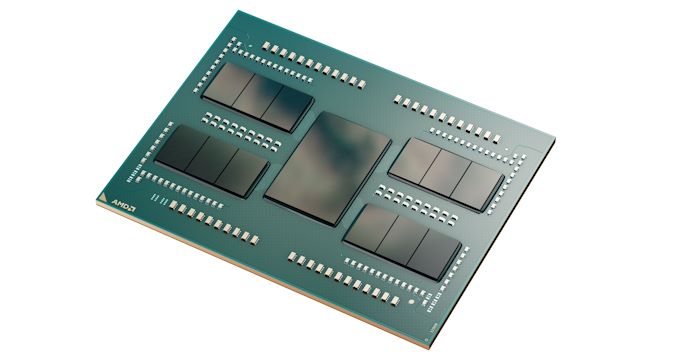
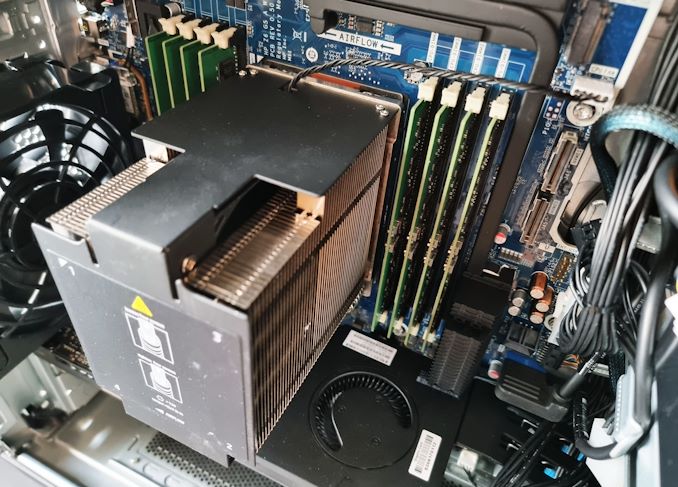








23 Comments
View All Comments
yankeeDDL - Wednesday, December 13, 2023 - link
So the Xeon is almost 2x slower at almost 2x power.It's amazing how far behind Intel has fallen.
TEAMSWITCHER - Wednesday, December 13, 2023 - link
If only people were still doing workstation rendering on CPU's....TheinsanegamerN - Wednesday, December 13, 2023 - link
If only people did things other then rendering on CPUs.schujj07 - Thursday, December 14, 2023 - link
You mean rendering or editing programs like Adobe Premiere? Premiere is still mainly CPU bound.xenol - Monday, December 18, 2023 - link
Only peak power is reported, which can exaggerate how much power Intel chips use since they have a higher power level over the TDP. They should've reported average power from a sample of workloads. Having how long each test ran would also be good to derive average energy usage.In addition, Intel's a process node behind TSMC.
Rοb - Wednesday, December 13, 2023 - link
> "We have been informed that the configuration we've reviewed today costs around $19,849.".Using the link you provided, choosing the base configuration and only changing the processor, the price is U$25,672.00.
Bare bones, with 16 cores, start around 5K.
Greg13 - Wednesday, December 13, 2023 - link
Many thanks for the review. I'm surprised you ran it with such little ram though. 128GB for 96 cores. That's barely more than 1GB per core. The workloads I'd be looking to use this on would be needing 8GB per core at least. It makes me wonder if the performance was somewhat limited by insufficient ram capacity? If these benchmarks aren't limited by such limited ram capacity, then I also think that you should look to get some new workstation benchmarks that are more memory intensive? We never seem to see the benefits of more memory channels in the benchmarks you use, which always surprises me.PeachNCream - Friday, December 15, 2023 - link
That's actually typical scaling with higher core count workstations. While the raw RAM quantity is higher than the average home PC, the per-core quantity is a lot lower as is the per-core memory bandwidth based on lots o' CPUs and not so many memory channels.Greg13 - Saturday, December 16, 2023 - link
Up until this generation with the 96-core part, Threadripper Pro has always matched the top desktop part in terms of memory channels per core. In terms of memory capacity per core, they far exceed standard desktop parts as they can have up to 2TB of RDIMM's. Which is several times more memory capacity per core than the desktop parts. However this review has chosen to review the processor with 1/20th of its maximum memory capacity which just seems odd to me and suggests that they are not testing it in its intended workload and/or limiting its performance compared to the lower core count processors which they've given the same amount of total ram.PeachNCream - Sunday, December 17, 2023 - link
To be fair, that's probably a decision at HP and not Anandtech. Anandtech hasn't purchased hardware for review in ages and is beholden to test whatever is sent to them (probably distributed by Future between AT and Tom's or shipped direct to AT - just guess on the distribution channel here) so they really can't be as flexible about that since there's just not any sort of money for reinvesting into reviews.